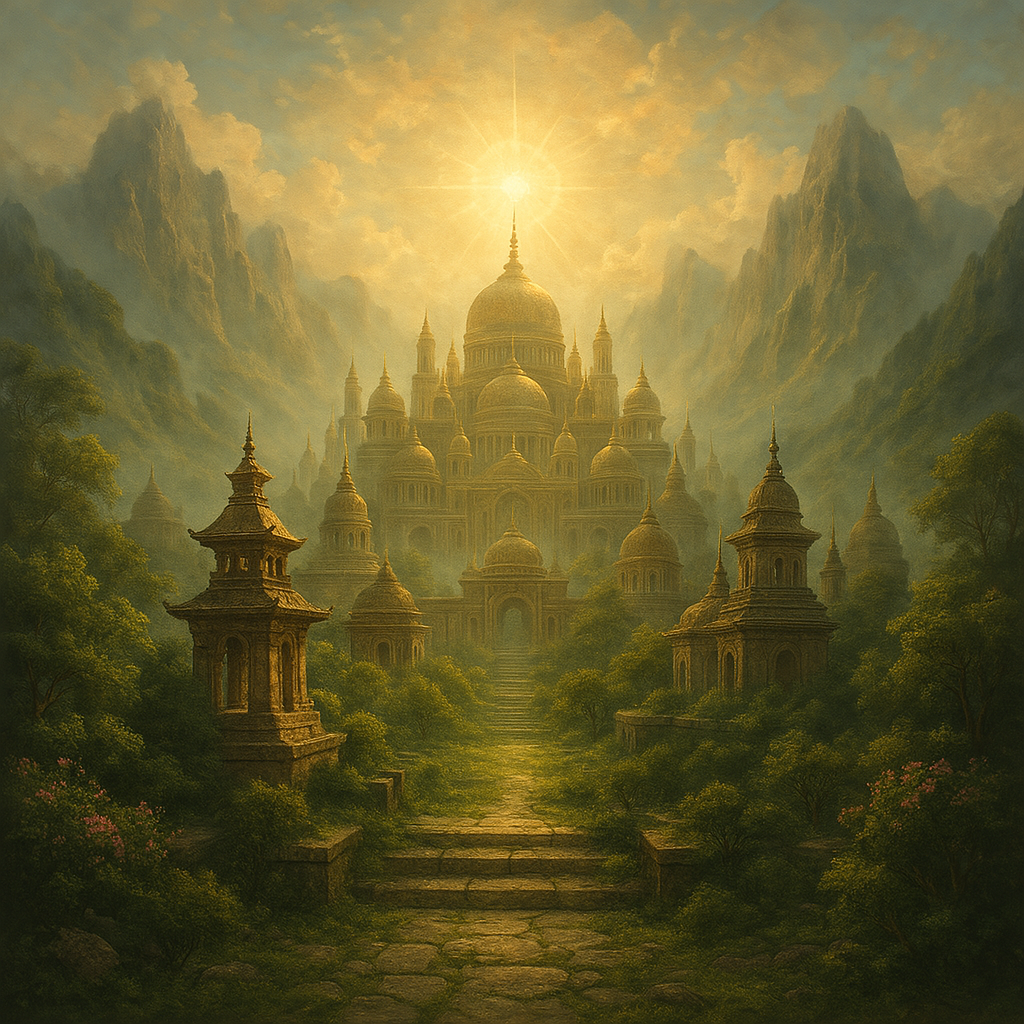Overview
The City of Shamballa is a mythical and spiritual kingdom that appears in various Eastern traditions and Western esoteric thought. Often identified with the Tibetan Buddhist concept of Shambhala, Shamballa is believed to be a hidden city somewhere in Inner Asia, characterized as a place of peace, tranquility, and wisdom. It is said to be inhabited by enlightened beings or ascended masters who safeguard ancient knowledge and spiritual teachings. The mythos surrounding Shamballa blends elements of earthly paradise with metaphysical dimensions, transcending conventional geographic and temporal boundaries.
Origins and Cultural Significance
Buddhist Traditions
- In Tibetan Buddhism, Shambhala (spelled slightly differently) is mentioned in the Kalachakra Tantra texts. It is described as a paradisiacal land, accessible only to the pure of heart or those with special karmic connections. The prophecy states that a future king of Shambhala will emerge to defeat forces of degeneration in a great battle, ushering in a golden age.
Theosophical and New Age Interpretations
- Introduced to Western thought by Helena Blavatsky and later expanded upon by figures like Nicholas Roerich, Shamballa is often depicted as a spiritual rather than physical location, connected to the Earth’s energy grid or existing in a higher vibrational plane.
Agartha and Hollow Earth Theories
- In some esoteric and adventure literature, Shamballa is connected with the concept of Agartha, a legendary city at the Earth’s core or within a hollow Earth. These interpretations often merge with UFOlogy and ancient astronaut theories, depicting Shamballa as a hub of advanced, possibly extraterrestrial wisdom.
Symbolism and Attributes
Symbol of Utopia
Shamballa represents the ultimate utopia—a society where all inhabitants live in harmony, enlightened by advanced spiritual and philosophical knowledge.
Centre of Learning and Spiritual Practice
It is often envisioned as a place where advanced spiritual teachings, unavailable in the outer world, are preserved and practiced. This includes deep meditative techniques, energy healing, and profound philosophical doctrines.
Access and Legends
Mystical Access
Access to Shamballa is said to be restricted to those who are spiritually prepared. It is believed that physical entry is secondary to a metaphysical or meditative journey that transcends conventional spatial limitations.
Guides and Guardians
Legend holds that Shamballa is guarded by spiritual entities or advanced beings who ensure that only those with pure intentions may access its secrets. These guardians are sometimes depicted as a brotherhood of ascended masters who influence global spiritual evolution.
Cultural Impact
Influence in Popular Culture
Shamballa has permeated popular culture, inspiring a range of creative works from books and movies to music and art, often symbolizing the human quest for meaning and enlightenment.
Spiritual Movements
New Age and contemporary spiritual movements often reference Shamballa in discussions about ascension, energy healing (such as Reiki), and the global spiritual awakening.
Conclusion
The City of Shamballa continues to captivate the spiritual imagination as a place where heaven meets Earth, and the esoteric wisdom of the ages is kept alive by enlightened beings. It embodies humanity’s highest aspirations for peace, wisdom, and spiritual perfection. Whether viewed as a literal place or a symbolic representation, Shamballa remains a powerful emblem of human potential and the hope for a future where harmony and enlightenment prevail.

